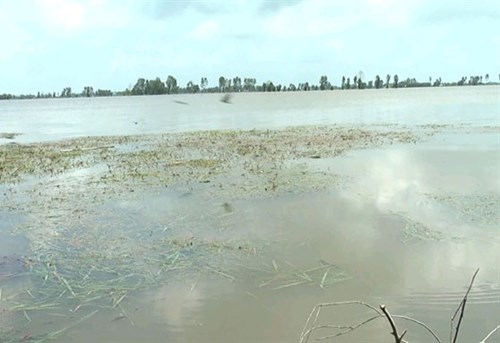More than 1,270ha of the crop in An Giang province, 316ha in Kien Giang and 182ha in Dong Thap were totally destroyed while 265ha in Dong Thap and 24ha in Long An were damaged.
Most of the destroyed and damaged fields are in areas without embankments while the rest were damaged because their embankments were broken or too low.
High tides too have been affecting agricultural production in the region, especially in Ben Tre and Soc Trang provinces and Can Tho city.
    |
 |
|
About 150ha of rice in Hamlet 2, Thanh Loi commune, in Dong Thap province’s Thap Muoi district were inundated after the Mekong Delta’s annual flooding broke embankments last month. Photo: VNS |
Nguyen Van Tam, Director of Kien Giang province’s Department of Agriculture and Rural Development, said that in order to cope with the flooding, delta provinces and Can Tho city have plans in place this year to prevent damages before and during the season.
They have consolidated embankments in many places to protect the summer-autumn and autumn-winter rice crops, he said.
Local authorities have stepped up dissemination of information about the flood situation to help farmers keep losses to the minimum.
They have helped farmers harvest the summer-autumn rice crop early in places where embankments are weak or low to avoid losses due to floods.
The flooding caused by the rising levels in the Mekong River during the rainy season is declining now and will not have cause further damage to agricultural production, according to the directorate.
However, in the remaining months of the year, high tides would increase the water level in rice fields along rivers in the delta’s central and coastal areas and cause inundation, it warned.
The directorate has told the delta’s provinces and Can Tho to carefully monitor tides next month.
They should regularly inspect and strengthen embankments in areas where the water level is high to avoid damage to crops, it said.
Source: VNA/ VNS